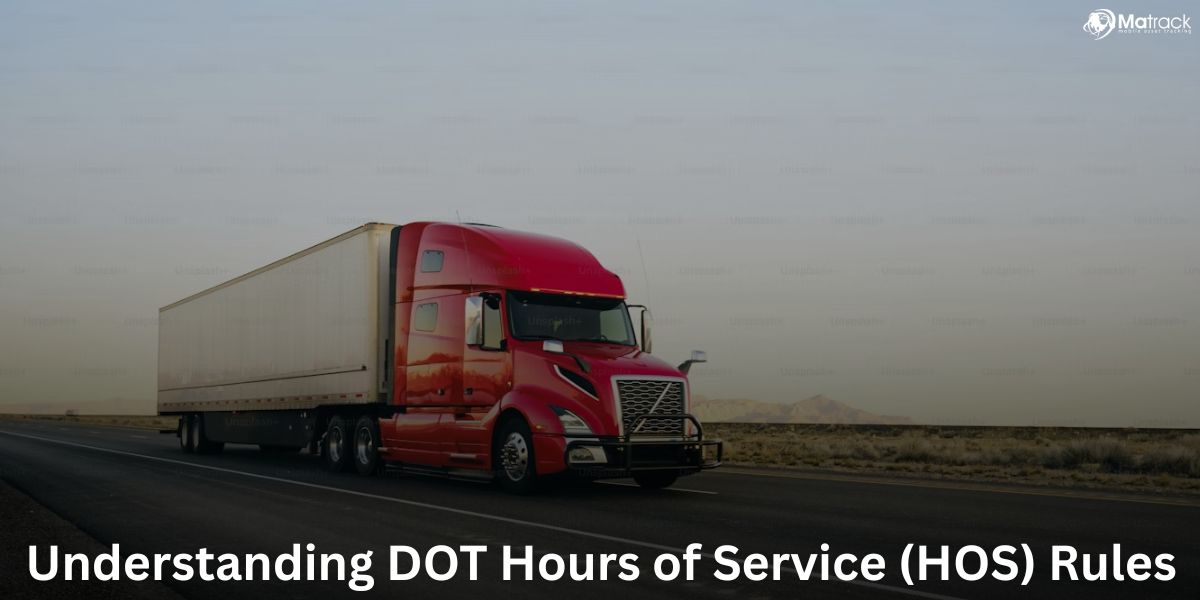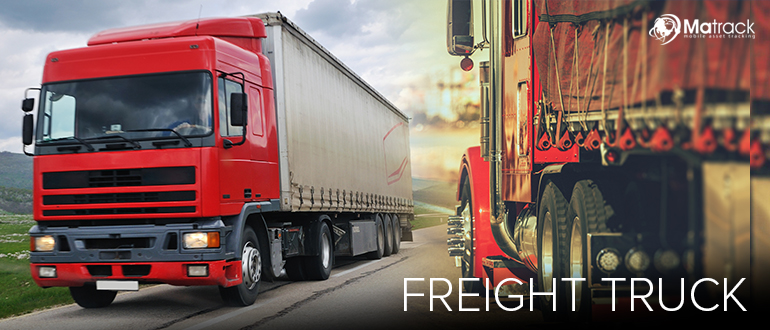Key Takeaways:
- Trucks should maintain a following distance of one second for every 10 feet of vehicle length when driving below 40 mph, adding an extra second for higher speeds and adverse driving conditions.
- Maintaining proper following distance prevents accidents and allows time to react to sudden changes.
- Tailgating is dangerous for trucks due to their longer stopping distances and slower reaction times.
- Matrack’s fleet dash cam alerts drivers when following too closely, improving fleet safety.
Trucks and fleets need extra space to stop safely because of their size and weight. Maintaining a safe following distance helps prevent accidents and protects everyone on the road.
What is the recommended minimum following distance for commercial vehicles?
The Federal Motor Carrier Safety Administration (FMCSA) recommends maintaining at least one second of the following distance for every 10 feet of your vehicle’s length when driving below 40 mph. At speeds over 40 mph, you should add a second for safety.
For example, a 40-foot truck needs a 4-second gap at lower speeds and a 5-second gap at higher speeds. In adverse driving conditions like rain or fog, doubling this distance is important to ensure safe stopping and reaction time.
Why is Following Distance Important for Trucks?
The following distance is the space between your truck and the vehicle in front of you. For trucks, keeping a safe distance is critical because they need more time and space to stop safely.
Longer Stopping Distance
Trucks take much longer to stop than cars. At 65 mph, a fully loaded truck may need up to 525 feet to stop, about the length of two football fields.
Better Visibility and Reaction Time
Maintaining enough distance gives truck drivers a clear view of the road. This extra space helps them react in time to sudden stops, debris, or changing traffic.
Lower Accident Risk
Rear-end collisions are one of the most common truck accidents. A safe following distance helps prevent these crashes and keeps everyone on the road safer.
Understanding Following Distance and Tailgating
Tailgating happens when you follow a vehicle too closely, increasing the risk of a crash if you need to stop suddenly. Driving too slowly can also create hazards, but maintaining a safe distance is crucial for safety.
Why Is Tailgating Risky?
Tailgating ignores the need for a safe following distance, especially for trucks that require more space to stop due to their weight and speed. Heavy trucks need longer stopping distances, making close following extremely dangerous.
It also increases the chances of rear-end collisions, traffic jams, and side collisions. Distractions like using a phone or not paying attention make tailgating even riskier by reducing your ability to react in time.
Setting the Right Following Distance for Truck Drivers
Adjust for Your Truck’s Length
The length of your truck affects how much stopping space you need. Add one second of distance for every 10 feet of your vehicle’s length to stay safe.
For example, a 50-foot truck should maintain a 5-second gap at lower speeds. Larger trucks need more room to stop safely, especially in emergencies.
Increase Following Distance in Adverse Conditions
In bad weather, like rain or fog, trucks take longer to stop. Double your following distance to avoid sliding or losing control.
At night or on poor roads, increase your distance even more. Extra space helps prevent accidents caused by low visibility or slippery surfaces.
Calculating Follow Distance in Seconds While Driving
Use a landmark, like a road sign, to measure your following distance. Count the seconds between when the vehicle in front passes the landmark and when your truck reaches it.
If the count is too short, increase the gap immediately. This simple method ensures you’re keeping a safe distance.
Use Technology to Maintain Safe Follow Distance
Dash cams and safety systems can alert drivers when they are too close to another vehicle. These tools help drivers adjust in real-time and avoid dangerous situations.
Matrack’s fleet dash cam records unsafe driving habits, giving managers and drivers valuable feedback. With this information, drivers can improve their behavior on the road.
Be Cautious When Driving
Staying alert is the best way to avoid accidents. Check your mirrors, watch for blind spots, and pay attention to other drivers’ behavior.
Defensive driving reduces risks and gives you more time to respond to sudden changes. Keeping focus on the road makes driving safer for everyone.
Control Your Rage
Staying calm while driving helps you make better decisions. Anger or frustration can lead to dangerous actions like tailgating or speeding.
Drivers should focus on staying steady and avoiding emotional reactions. A calm mind helps ensure everyone’s safety on the road.
How Matrack’s DashCam Can Help in Ensuring Safe Driving
Matrack Fleet Dash Cam uses AI to monitor driving behavior and identify risks like tailgating. It detects vehicle distance and speed to ensure drivers maintain safe following distances.
If the system detects unsafe behavior, it alerts the driver in real time. These alerts help prevent accidents and improve safety for fleets on the road.
Conclusion
Keeping a safe following distance is important for trucks to prevent accidents and stay safe on the road. It gives drivers enough time to stop and avoid crashes, especially in bad weather or heavy traffic.
Matrack’s Fleet Dash Cam helps by monitoring drivers and giving alerts when they follow too closely. This makes it easier for drivers to stay safe and maintain proper distance while driving.



